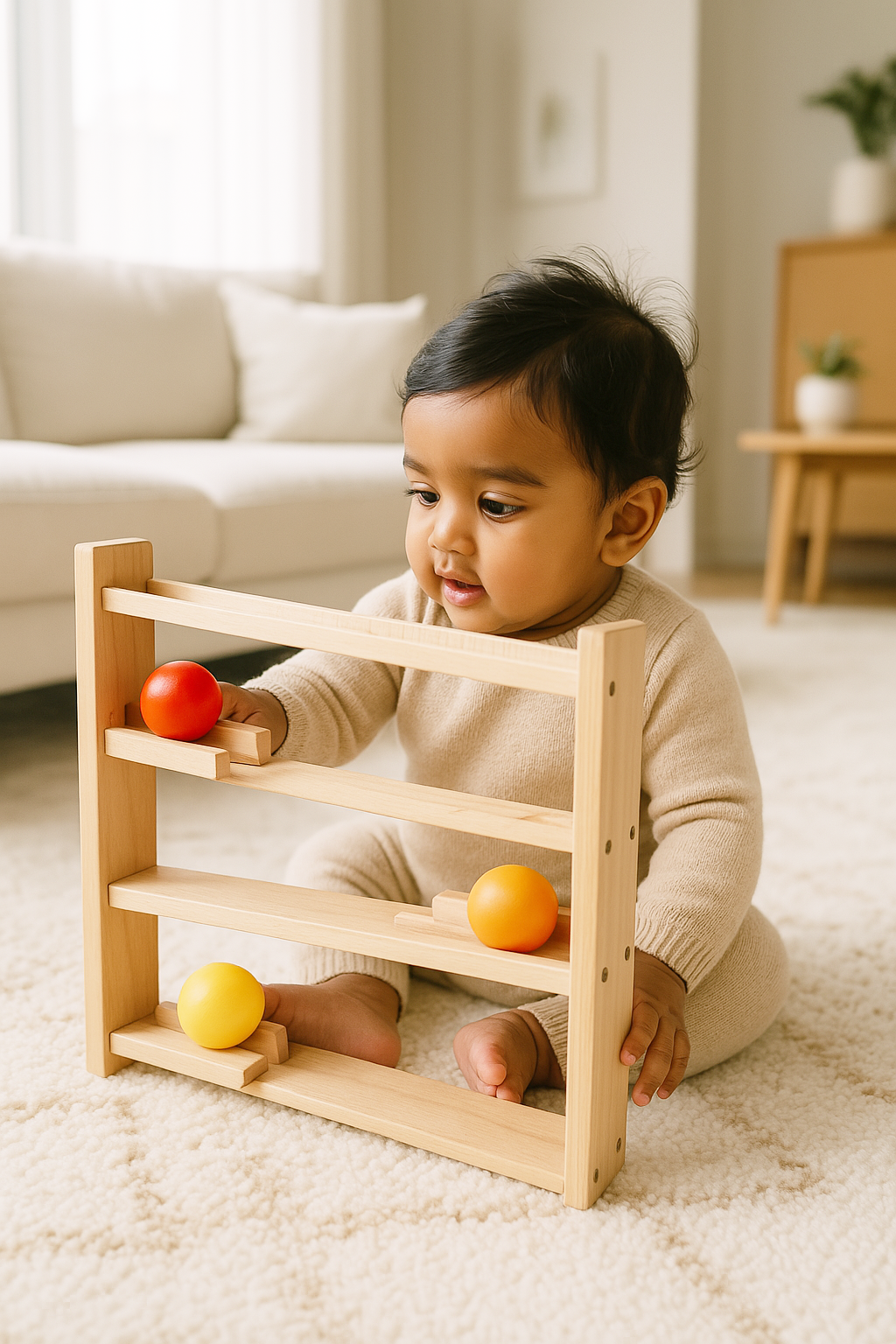
Little Eyes in Motion: How Visual Tracking Organizes Your Baby's World
LiLLBUDHave you ever seen your baby's eyes tracking a ceiling fan, a swinging keychain, or a rolling ball? That look isn't cute—it's one of the earliest indicators their brain and body are talking to each other harmoniously. This skill is visual tracking, and it's an unsung hero of early development.
At LiLLBUD, we would like to call it the point your baby begins to "see with intent."
What Is Visual Tracking?
Visual tracking is your baby's ability to track smoothly moving objects with their eyes. It begins developing from as young as 2 months and progresses to fine-tuning by 6 months and later. Babies initially track side to side, then up and down, and later in a complete circle.
It's a seemingly easy skill, but visual tracking is the foundation of so many: reaching for toys, crawling towards a goal, knowing faces, and later—reading along a page.
This coordination of eyes, brain, and body is one of the important building blocks of early visual development.
Why Visual Tracking Matters
Without good visual tracking, your baby might have trouble with:
- Depth perception (how far away something is)
- Hand-eye coordination (reaching for what they see)
- Focus and attention span
- After motion, which goes on to aid reading and writing
The more the babies are able to follow movement, the more they will learn to engage with their environment. It's the intangible string that ties what they notice to what they do.
How Parents Can Encourage Visual Tracking
No screens or hi-tech devices required. The truth is, babies do best when their toys are plain, soothing, and intended to encourage natural attention.
Here's the trick:
- Gently sweep soft toys in front of their line of sight while playing with them.
- Play peekaboo or hide-and-seek with items.
- Provide toys that move slowly and consistently in one direction.
- Promote floor time, so they can follow objects at eye level.
One toy that does it so nicely? The Roll & Watch Ball by LiLLBUD.
The Toy That Makes Eyes Follow: LiLLBUD's Roll & Watch Ball
Intended for babies 6–12 months, the Roll & Watch Ball invites visual tracking by slow movement and pleasant action. Its wood base makes it substantial enough to roll smoothly—not too quickly, not too random.
As your baby observes it rolling, their vision follows naturally, developing concentration, attention length, and eye coordination. It's a soothing substitute for bright lights and dizzying sound—ideal for Montessori-inspired learning at home.
We hear from parents how this ball falls into a daily routine: roll, follow, laugh, repeat.
Discover the toy here.
What Experts Say
As stated by the University of California's Early Brain Development Initiative, visual tracking during infancy is a highly important basis for cognitive ability. Infants who do eye-tracking play will have a higher chance of building better attention control, language processing, and fine motor skills.
In a nutshell, that intense stare is determining the way your child acquires movement, reacts, and comprehends.
Final Thought
Sometimes, the greatest growth occurs in the smallest moments—such as when your baby's eyes track a ball rolling across the floor. You might not hear milestones being reached, but believe us, they're occurring.
At LiLLBUD, we craft toys that facilitate these quiet, fundamental steps—without overstimulating your baby. The Roll & Watch Ball is a lovely means of developing attention, patience, and awe—one gradual roll at a time.
Explore our entire range of early learning toys 6–12 months on www.LiLLBUD.com, and encourage your little one to explore the world with purpose.

